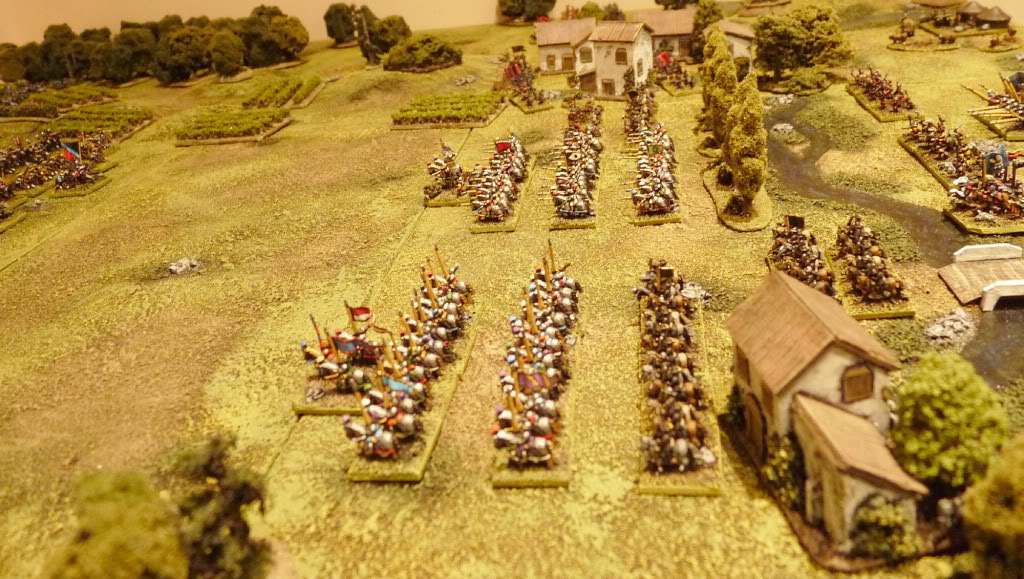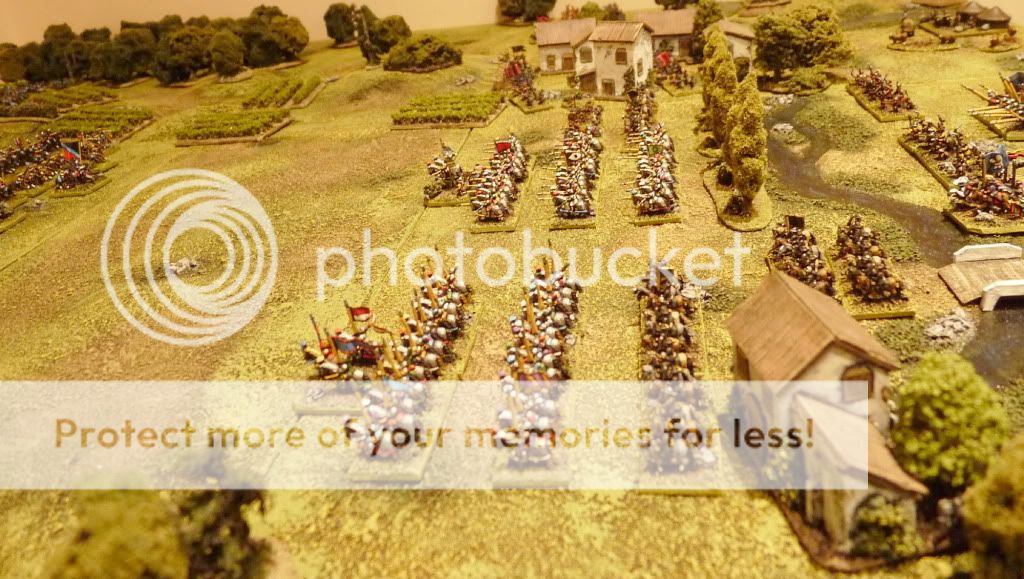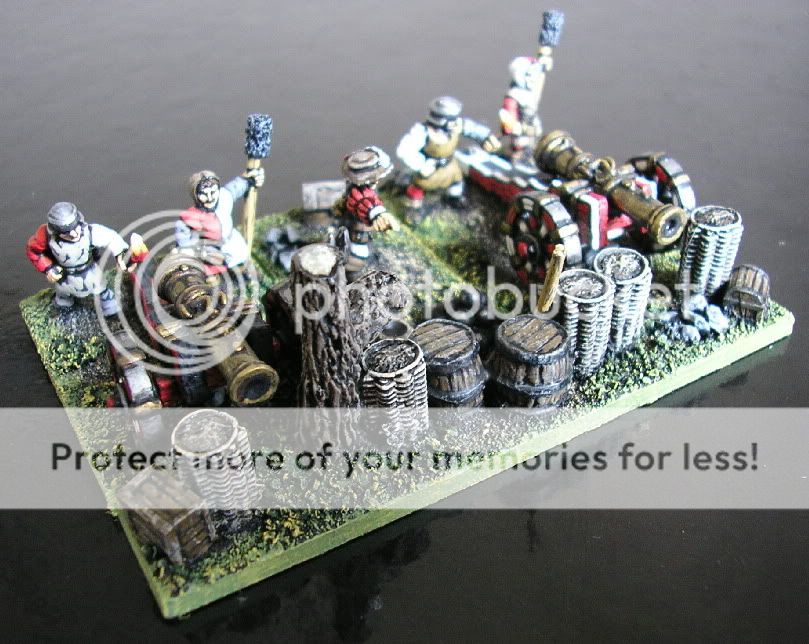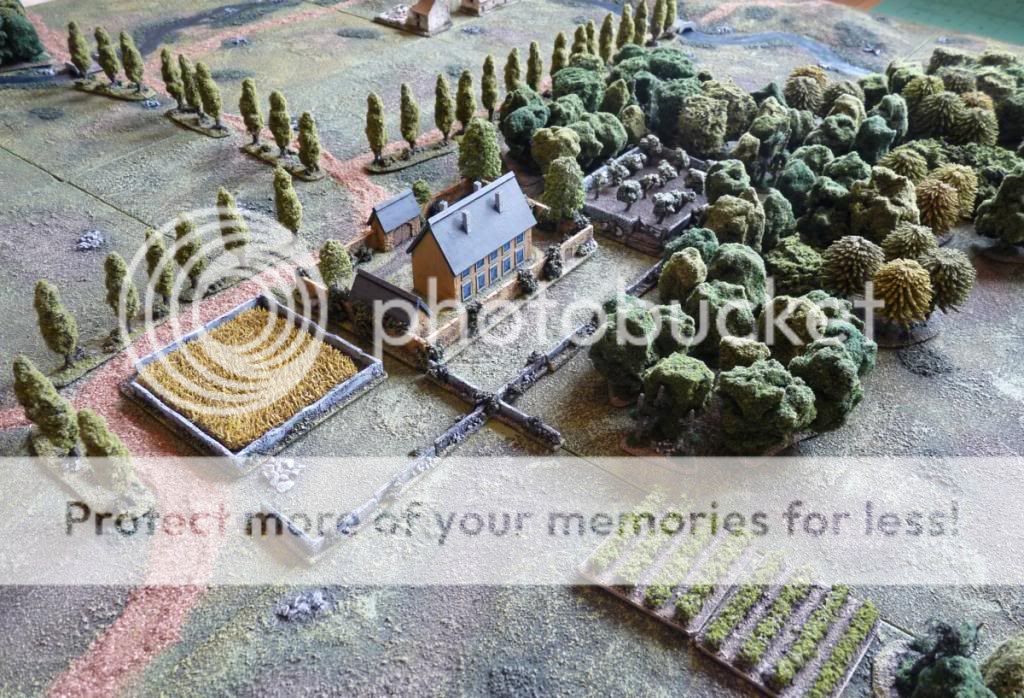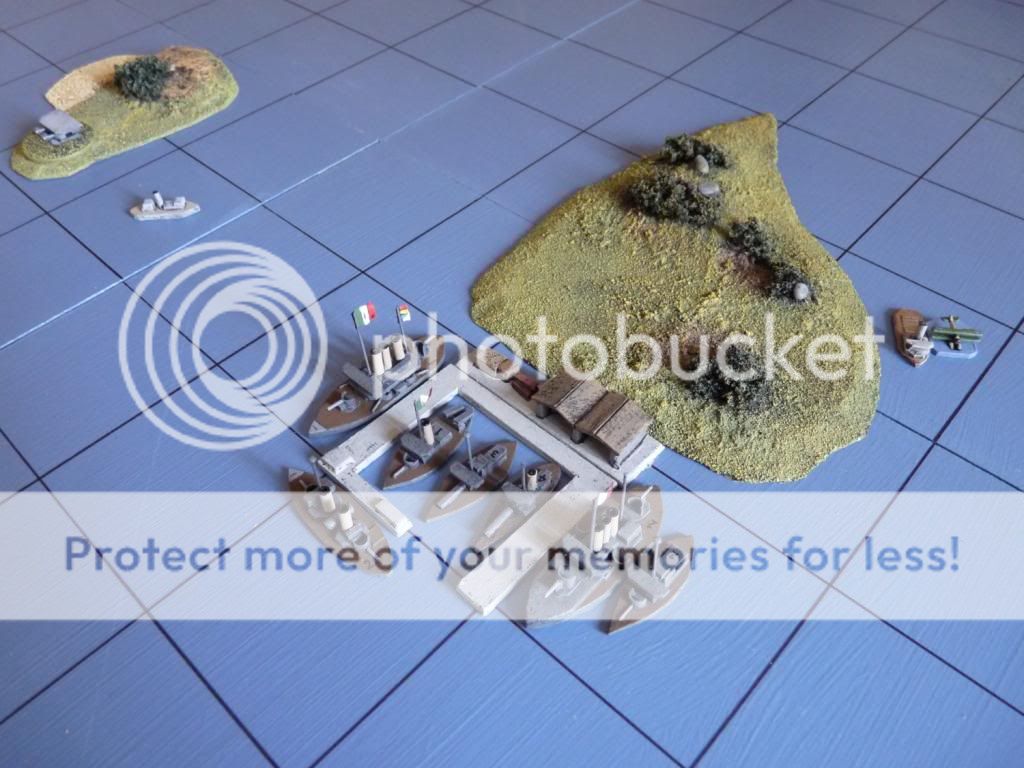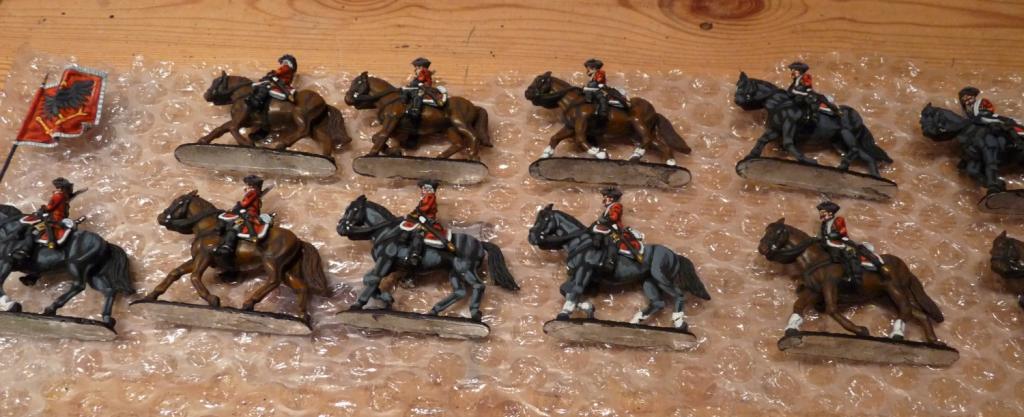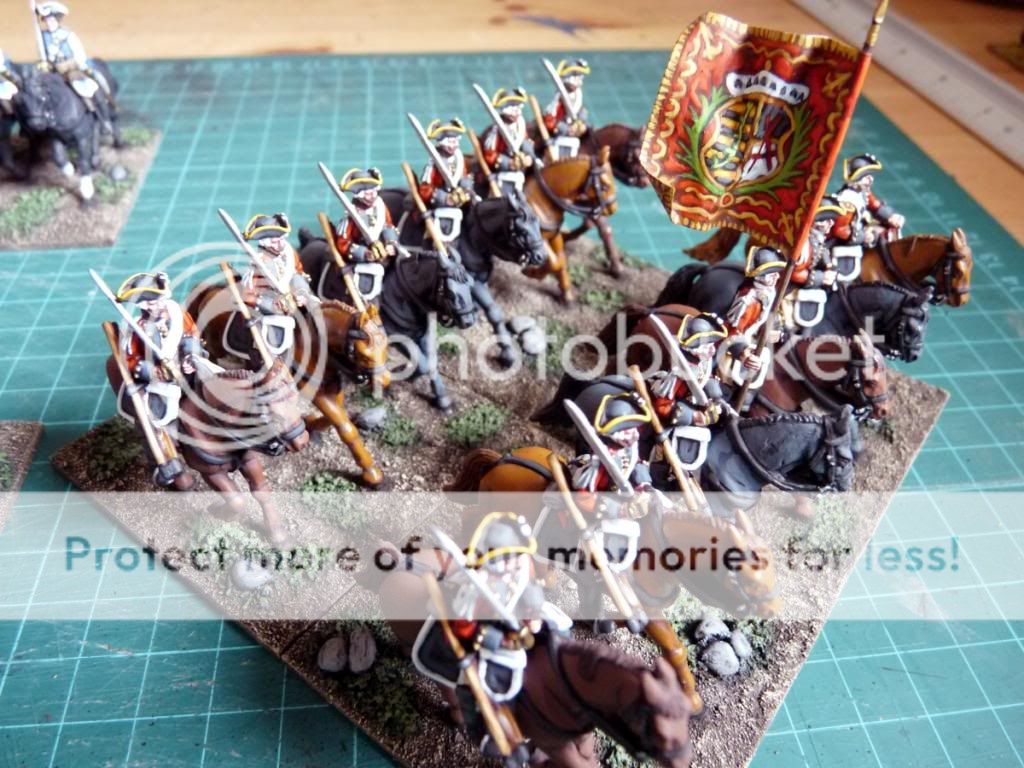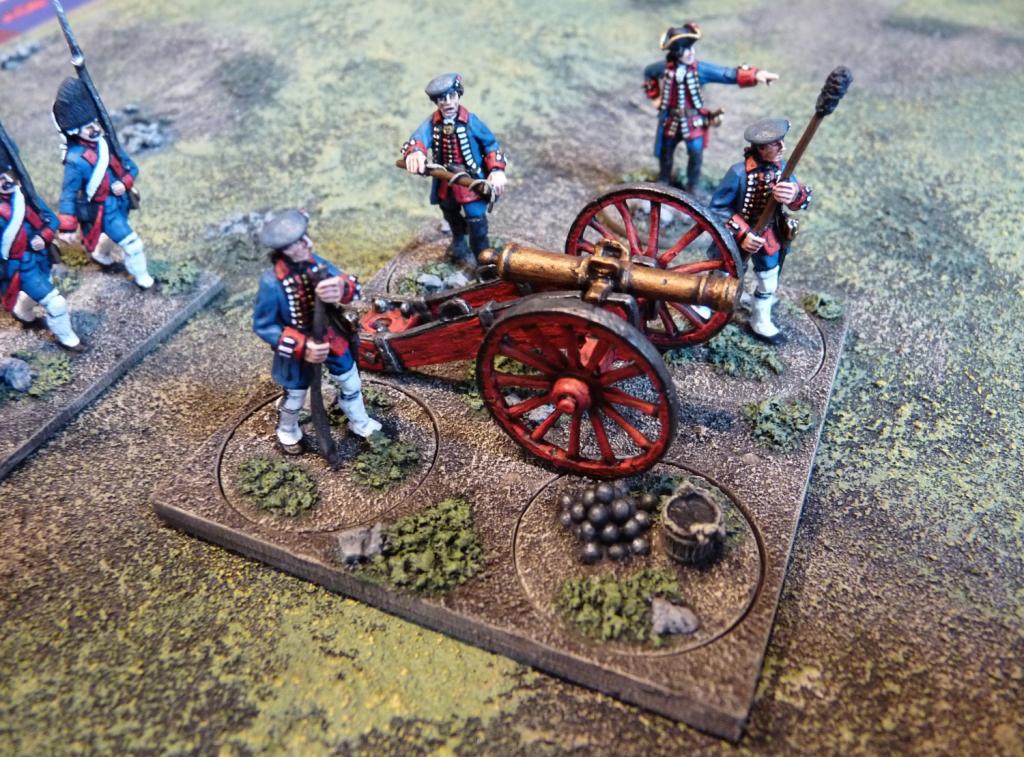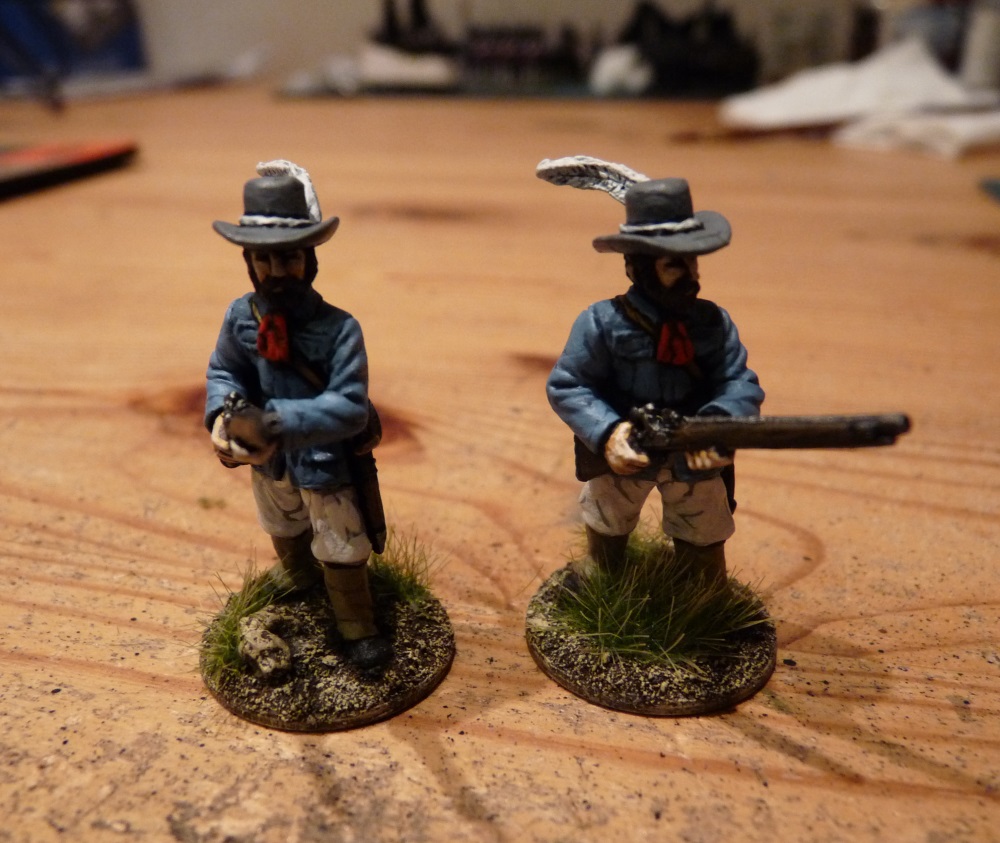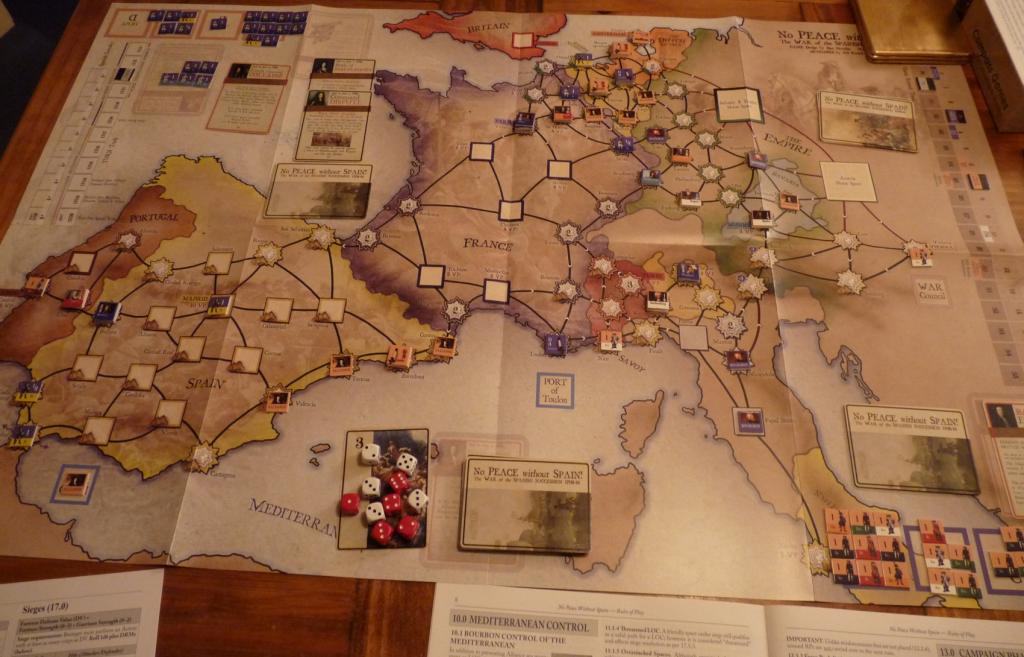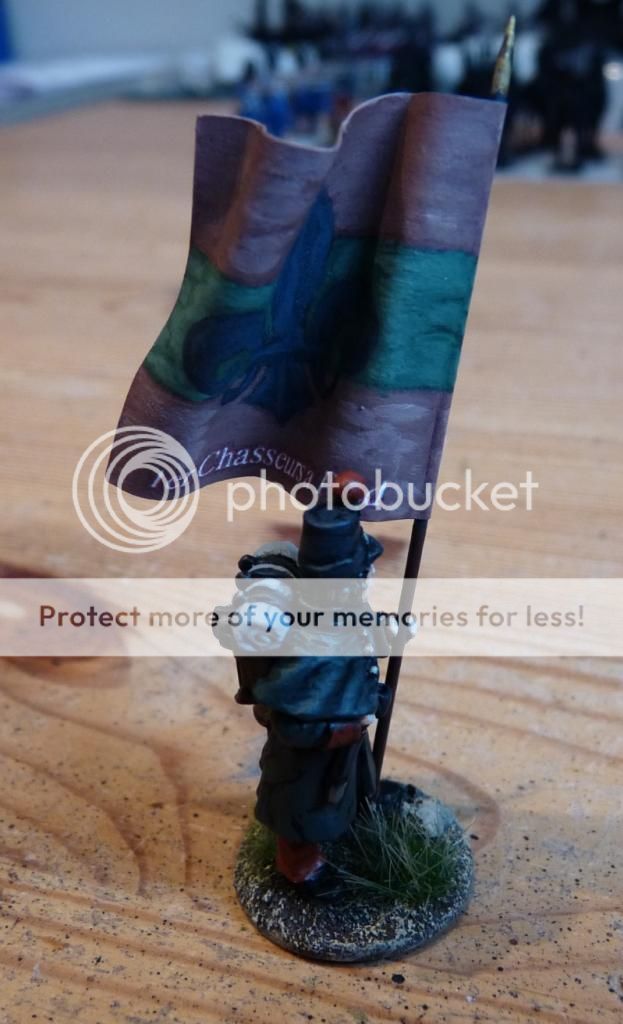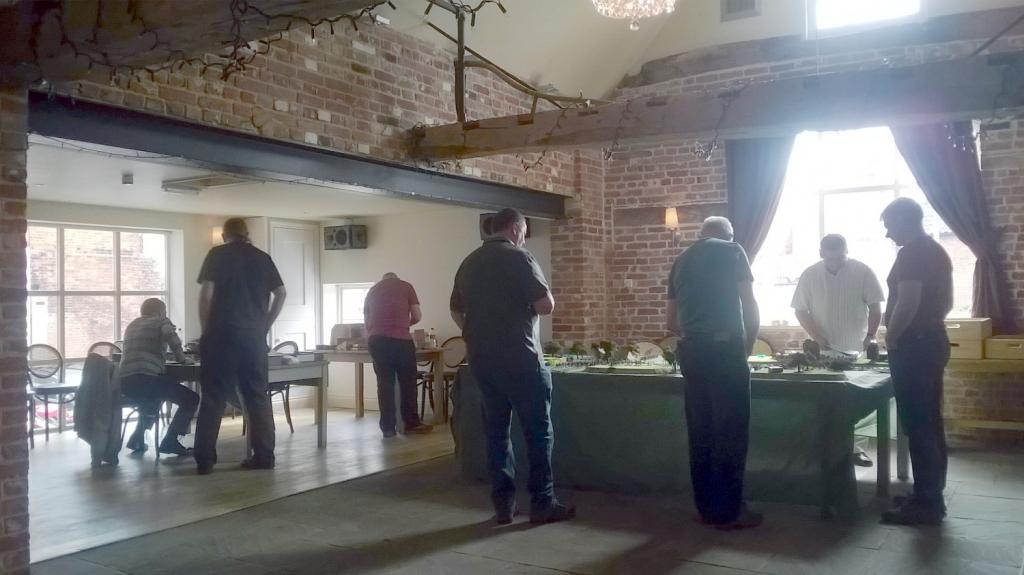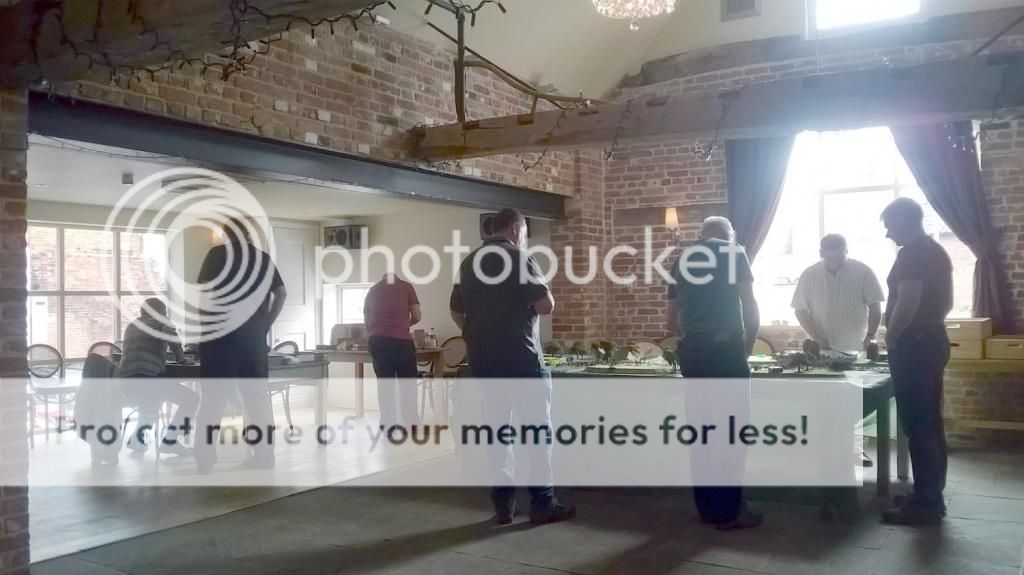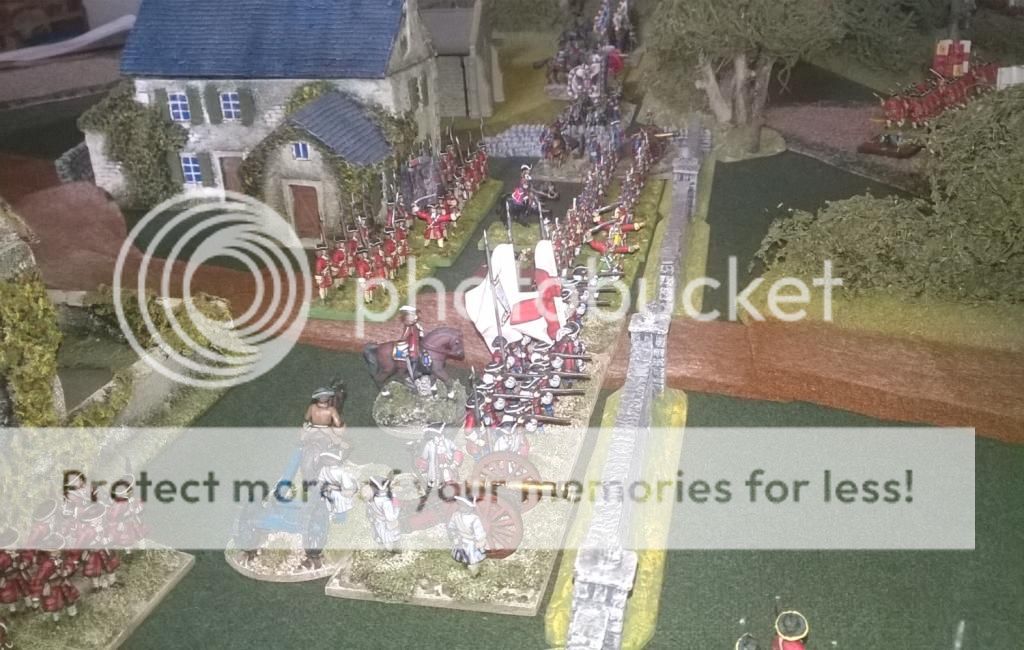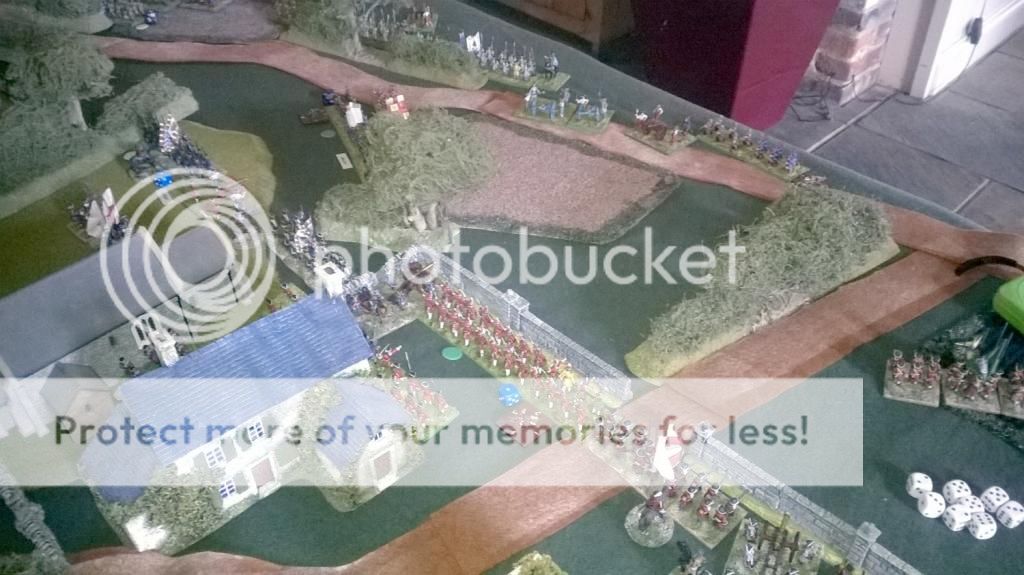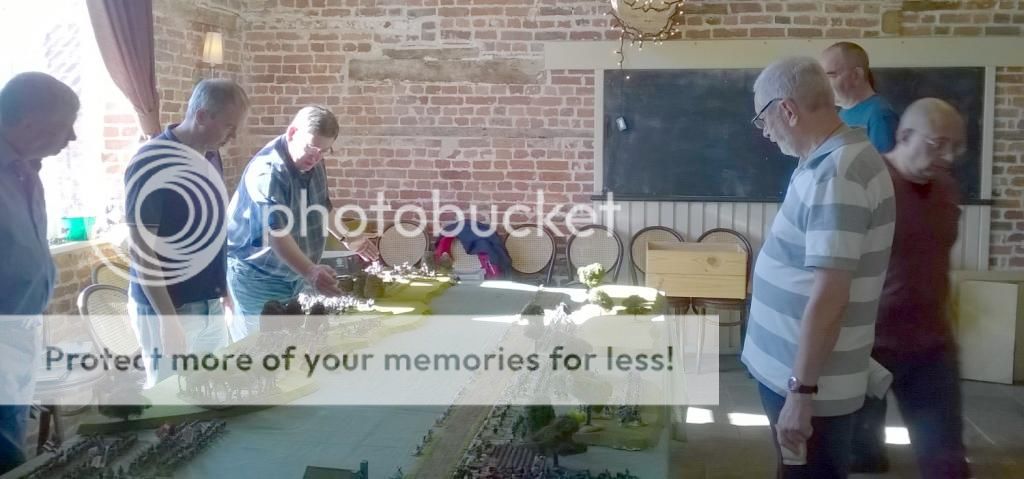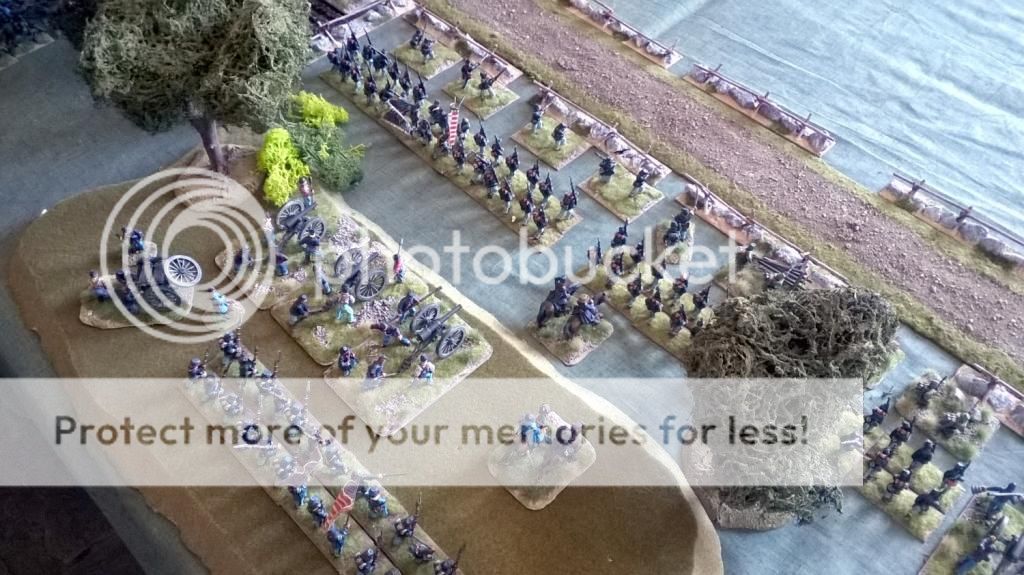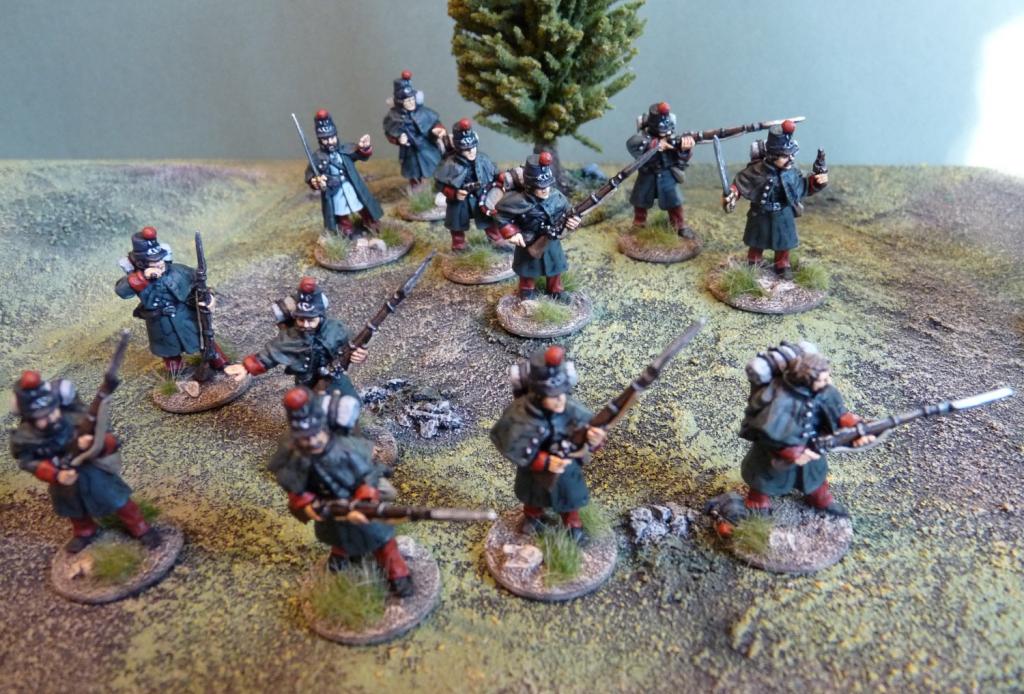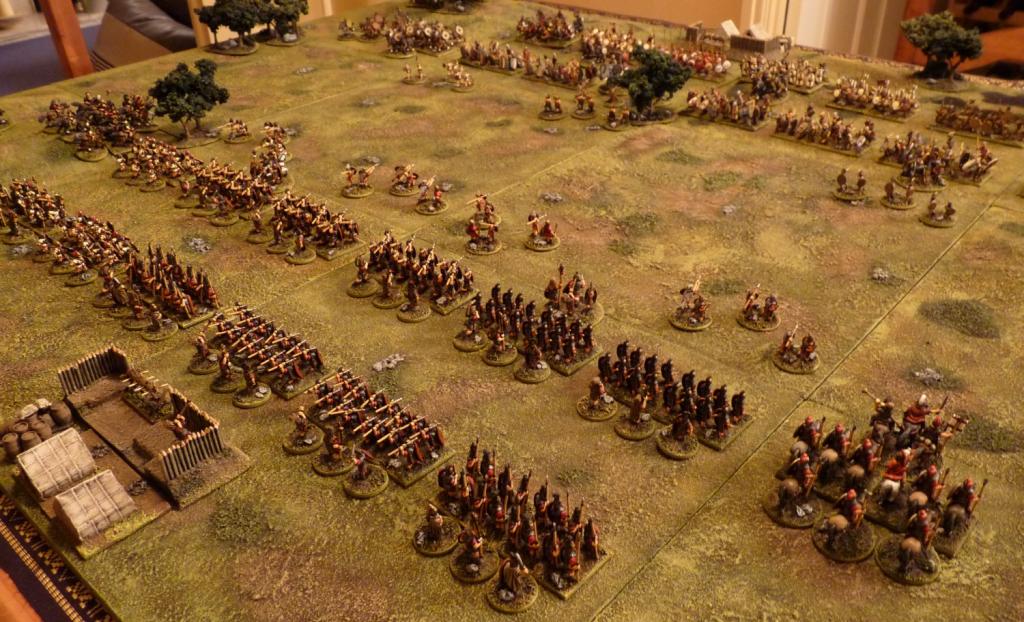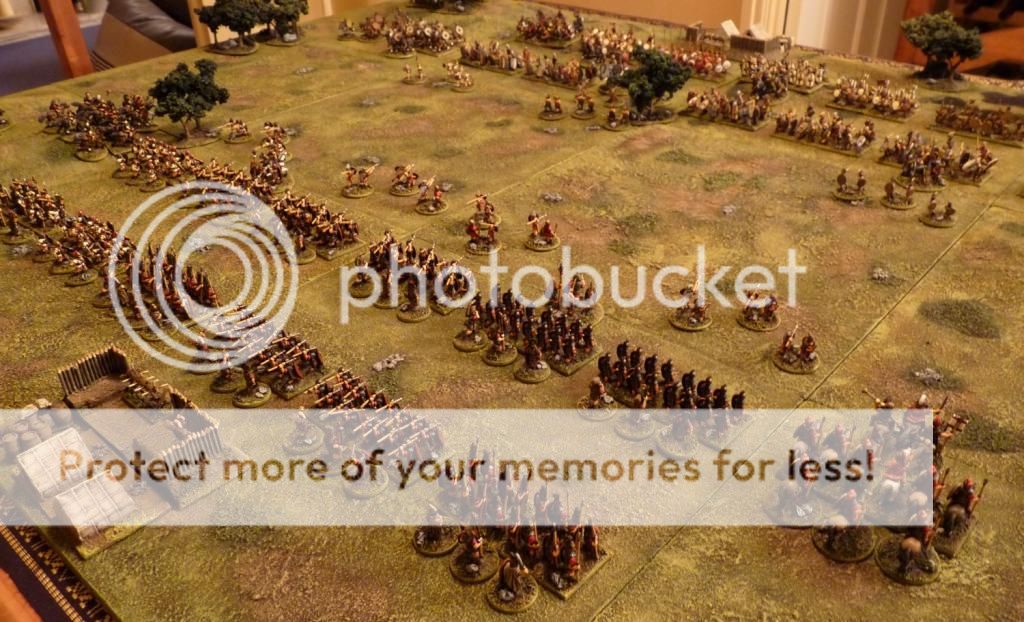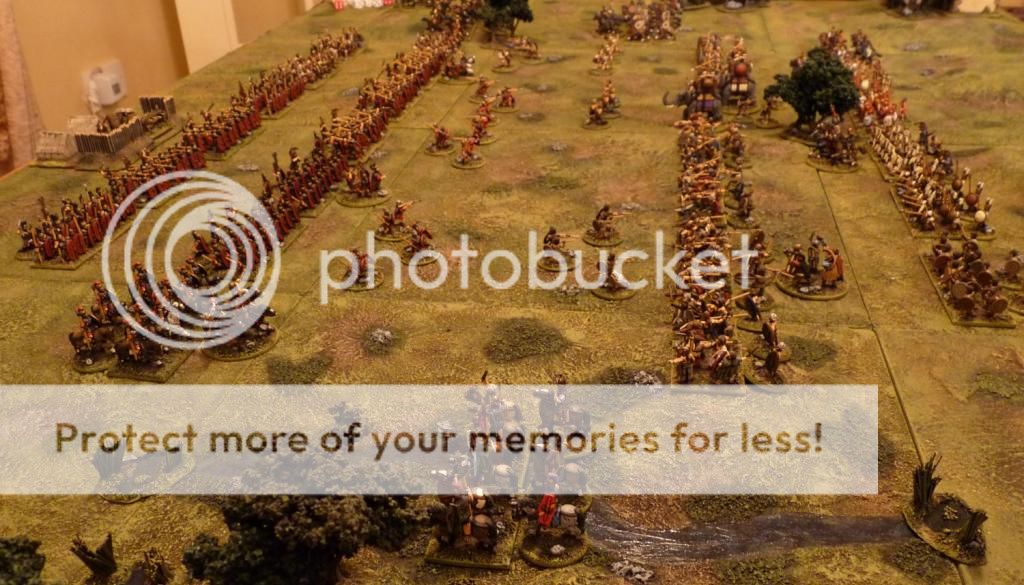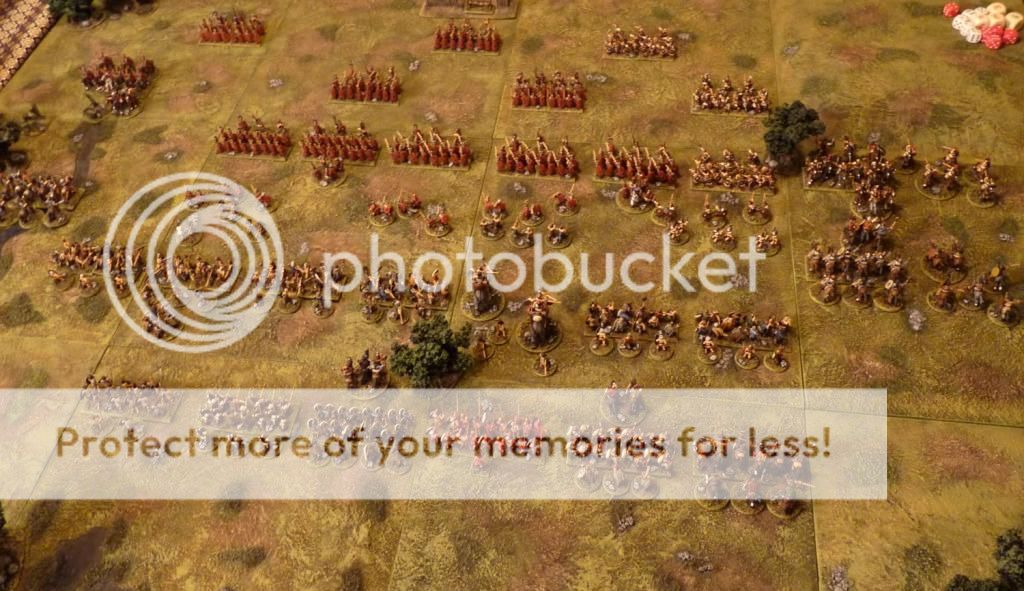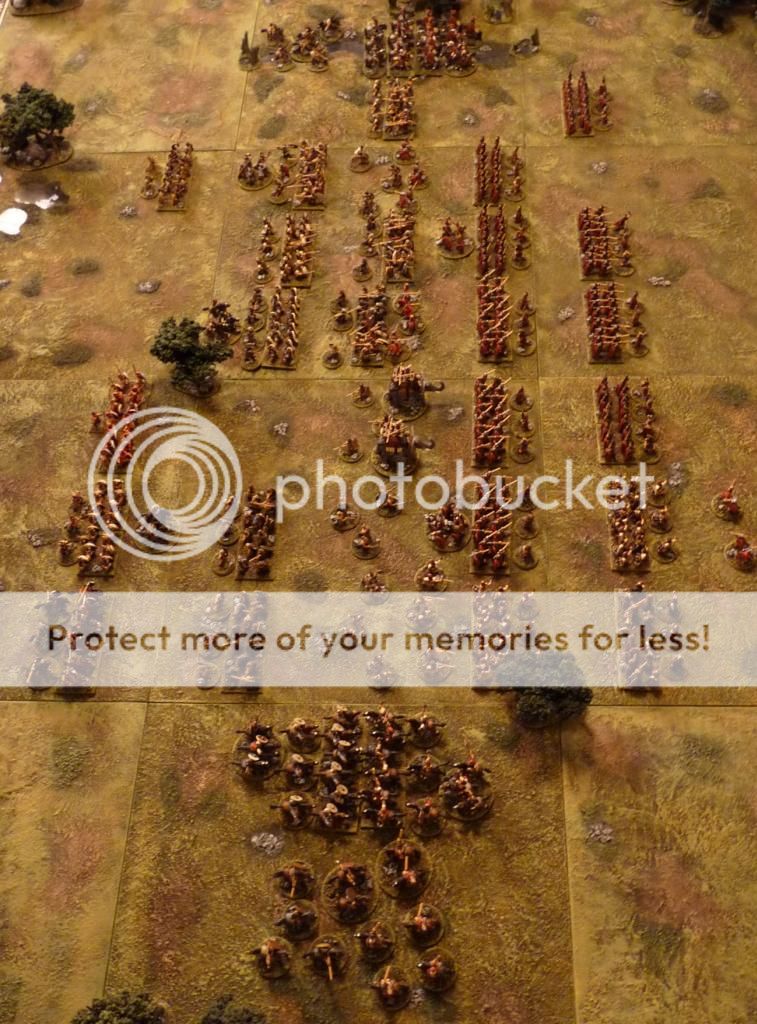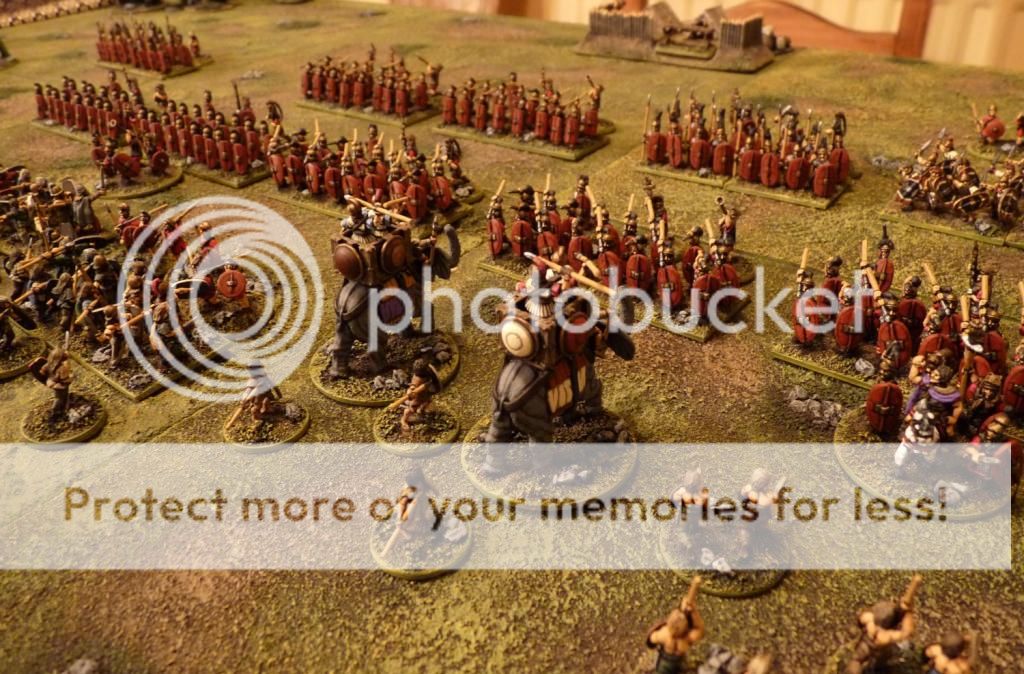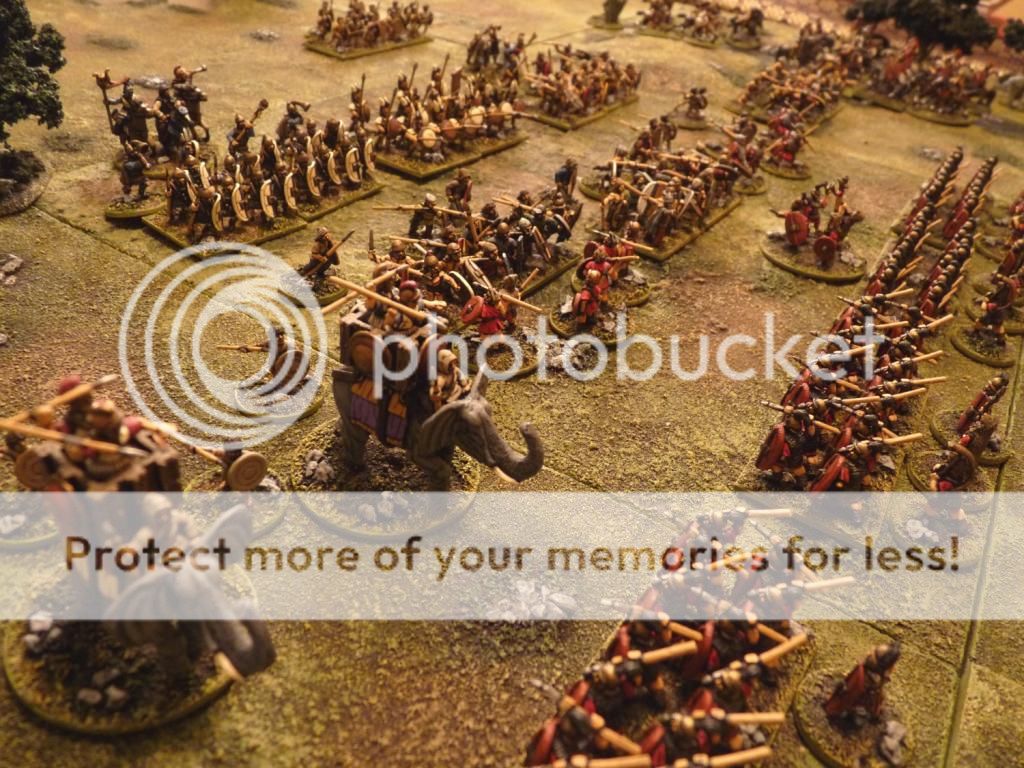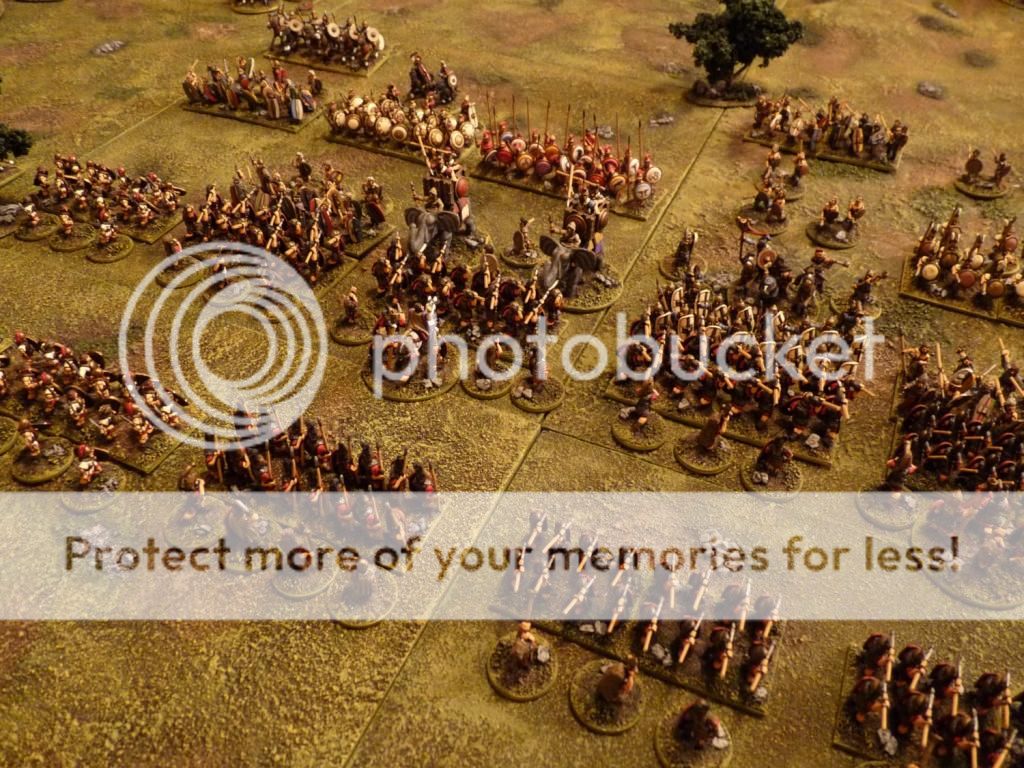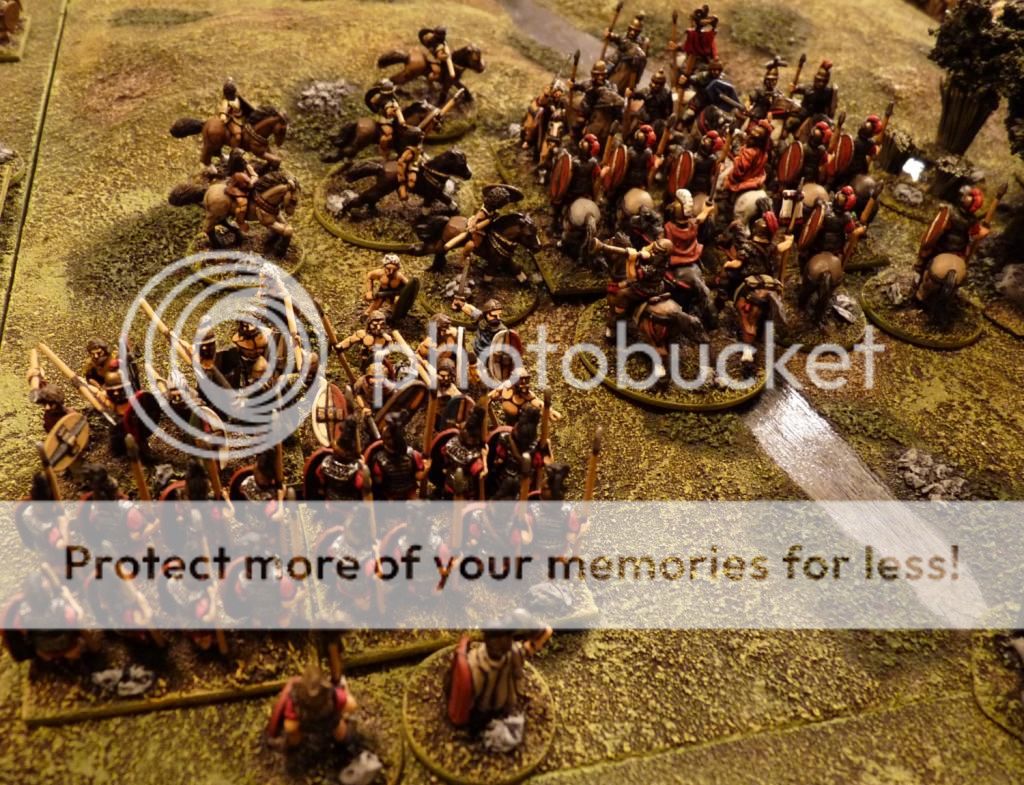Today is the 1st anniversary of launching this blog, so happy birthday to The Medetian Wars. It’s been fun for me so far and I’ve really appreciated everyone who’s popped in to have a look and I’ve been especially grateful for all the positive, supportive comments. There have been over 6,000 page hits, which I think isn’t too bad for a new blog in a quiet corner of the hobby.
Dragoon Goodness
A pleasant arrival this week – I’ve just received a batch of painted figures from James Roach (Olicanalad to those that know him via his web persona). These are the second regiment of dragoons that James has painted for my 18th century Fleurian army, and I’m very pleased with them.
It’s a 12 figure unit, and I can pair it with another for the big Ayton games where 24s make a lot more sense on a 30ft table.
The flag took a bit of research as neither James nor I could find an illustration to go with the written description; eagle one side, castle the other. In the end James put his artistic talent on the case and came up with a very nice interpretation:
The figures are Minden Austrian dragoons, and they’ve been painted as the historical Austrian Wurttemberg regiment, although they’ll mostly do service under a Fleurian name. I chose this unit partly because their red coat/black cuffs match the previous Saxon Graf Rutowski regiment:
They look good in 12s but a double unit with 2 splendid red flags will work well together when the occasion demands. Now I just need to get the new arrivals based.
Legion de Fleurie Light Gun
The mid-18th century Legion is coming along slowly. I’ve managed to finish the small artillery component – leaving the 2nd light company, the bulk of the grenadiers and the commander still to do.
The crew are very mildly converted Royal Ecossais command figures from Crann Tara’s Culloden range. They’re by the same sculptor as Minden Miniatures, so are lovely well-proportioned figures. The pointing officer received a linstock and two standard bearers received the rammer, etc. Lots of detail to paint, but worth it. The uniform is basically the same as the Legion light infantry (inspired by the Royal Ecossais themselves) and the gun is in red to match, unlike the regular Fleurian artillery which has yellow carriages and equipment.
The gun is from RSM and the 3 crew denote it as a light piece.
Deployed on sabot:
Old school style:
All Ashore!
Although technically I’m currently focused on painting line infantry to bulk up my Fleurian forces for Sharp Practice.. I fancied a break and have painted a couple of samples for another small Medetian force – the marines. Medetia is a maritime nation after all!
These figures are from Gringos, specifically Austrian Jager from the Maximillian campaign in Mexico. I decided that the hats fitted in well with the tyrolean-type headgear worn by most of my Medetians in this period, and there are a couple of very nice command figures in the range that I wanted to include as ‘Big Men’. It’s only going to be a small contingent of marines – one that can be deployed as part of the naval landing party I have planned (those river and coastline terrain sections I made last year got me thinking you see..). They should get a run out at Ayton 2015 too, fighting their way across the dark continent with everyone else.
The figures are quite chunky but fit in fine with the Perry and Victrix that make up a lot of the rest of the collection. They received traditional Medetian colours; sky blue, white and red, and I think they look the part for what I had in mind. Now I just need to make sure I don’t get too distracted and rush to paint the rest before finishing enough Fleurians for a game!
Refighting the War of the Spanish Succession
This week I’ve been playing through a full session of the boardgame ‘No Peace Without Spain!’ by Compass Games – the War of the Spanish Succession in its entirety. This is a game I’ve had for a little while and been keen to play, but have lacked the time to really give it a go. It’s designed as a 2-player game but like many, solo play is possible and still a lot of fun.
I’m not going to do a full review, as there are already a number of these online, but my overall opinion is that it’s an excellent game that does a very good job of capturing the high level strategy of the war. I gives players the challenge of choosing how to use the limited resources available and makes the campaigns, battles and even the sieges exciting and fun to play through.
Overview pic (click to enlarge as always):
It’s also nicely presented, with good quality components (although it’s a shame the map isn’t hard-backed) and goes into just the right amount of detail for the types of operations you undertake at this strategic level. There are historically appropriate events that occur (such as Savoy changing sides, French financial collapse, etc), often causing disruption to your plans for the year. The rules are rated as moderately complex, and once I’d played a few turns they were fairly easy to remember (although I’m sure I didn’t get everything right initially!). Mechanisms were certainly nice and straight forward, giving believable results every time.
It’s a war that’s always been of interest to me, and this game provides the opportunity to appreciate how it was fought, and why things happened (or didn’t). Very enjoyable too.
Below – The cockpit of war (in 1711) with Marlborough sitting on a fortified line one move away from Paris, and the French sitting opposite him behind their own line (there’s an excellent rule for the better generals to attempt to by-pass defensive lines, and come to grips with the enemy behind). Antwerp is surrounded, with most of the Spanish Netherlands overrun by the Alliance.
Over several sessions I got to grips with the rules and played through until an Alliance major victory result was secured in 1712. The English had withdrawn from the war at the end of the previous year, taking the Duke and his redcoats with them, but it hadn’t been enough to allow the Bourbons to recover from their earlier losses. There had been a few ‘Famous Victories’ (well, once Marlborough stopped losing the early battles!), lots of sieges and some bold manoeuvres by land and sea. Spain and Italy were still largely held by the Bourbons, but the Alliance had done better where it mattered in northern and central Europe.
It’s certainly a game I look forward to playing again in the future.
Chasseur Standard
Quick post – I finished the flag for the Fleurian light battalion. It’s a simple design with the Fleurian deep red, the green of the Chasseurs, and the national fleur de lys symbol in black (I thought a muted flag was suitable for the light infantry) – plus the unit name below.
Naturally this was all done on the computer and highlighted with paint. I can’t paint lettering like that and free-hand fleur de lys are tricky!
A Weekend in Framlingham
This weekend saw a get together of a group of wargamers from up and down the length of England (unfortunately our Scottish contingent couldn’t make it). We congregated on Friday evening in the Suffolk town of Framlingham, where our local host Tim had made the arrangement for us to have an excellent couple of days of gaming, socialising and recovering from hangovers.
It was a fair old way to go, especially for those coming from the North East, but everyone agreed it was more than worth it. Great company and top-notch games throughout, and lots of laughter and banter to go with it.
We used the very nice function room at The Crown, a lovely hotel/inn where some of us were staying, which gave us plenty of room and facilities to spread out in. Despite this pic, the lighting was a bit dim when the sun wasn’t shining (ie. most of Saturday) so I didn’t get many decent photos on my phone.
Several people had offered to put on games (there were several rounds of voting(!) over a year ago), providing the figures, rules and scenery for others to play. These included Peeler’s Leipzig DBN taster (for Simon, who seemed to enjoy it immensely), Essex Boy and GaryP’s 20mm Marlburian game (which Andy and I joined), and the main event – Tim’s awesome ACW collection in a full-on 2 day clash which started on Saturday and which we all joined on Sunday.
The WSS game was great fun, and it was a pleasure to play with Iain and Gary’s superb collections. The rules used were Rank and File from Crusader, and they gave a quick realistic game with simple, easy to learn, mechanisms. We played at least 12 full turns which says a lot for how easy the rules are to pick up. Everyone agreed that it looked and fought out as they imagined a Malburian battle would, and we had some very exciting moments as both sides had triumphs and reverses.
As allied commander I had the dubious benefit of Iain’s dice rolling assistance (he was also the scenario designer and umpire) but fortunately the English, Dutch and Danes fought tenaciously among the hedgerows and successfully held the right and centre against the French infantry. It didn’t go so well on the left, however, where the cavalry fought it out in the open fields. Here the enemy gradually got the better of the allied squadrons, helped by an infantry brigade which came up and held the farm in the middle of the melee. Their volleys emptied a good few saddles and by the end (which was deemed to be dusk) our flank had collapsed.
We all surveyed the battlefield and agreed it to be a strategic success for the French, as the allies would eventually have to retreat down the only road they remained in control of, but a tactical draw, as 2/3 of the table remained in allied hands as night fell. A really enjoyable game all-round, with friendly and generous opponents in Andy and Gary, and lots of thanks to Iain for the effort he put into planning and running the game.
Then it was off to the bar for a well-earned beverage or two and the usual debate about basing, followed by an excellent curry in a nearby restaurant and more beers in Tim’s local.
On Sunday we all re-assembled (some more slowly than others..) for the now-expanded ACW game. Tim, Phil, Dave and Tim W had fought the opening moves of this encounter battle (Coinville I think) on day 1 and developed the battlelines that the rest of us joined for day 2. I was on the Union side (which I think I’ve been on every time I’ve played this period, but which is fine by me) and I was involved in trying to defend the centre and right against an outflanking Reb attack, while waiting for our reserve division to arrive.
There was lots of artillery fire initially, and then the infantry got to grips and casualties mounted. The whole time JEB Stuart was dashing round our right flank and things were a bit nervous as we waited for the outcome of the Union CinC’s rolls to see where the reserve would appear. Naturally Iain’s dice ensured it would be at the other end of the table, and that sounded the death knell for the North! Unfortunately I had to leave before the final turns were played, but it was a delight to see these armies on the table again and to be involved in such a great looking game.
Some of my division, all gorgeous figures from Tim Hall’s collection:
All in all, everything went even better than expected and we’re looking forward to the next opportunity to get together again for another one. Big thanks go to Tim for all the planning/arranging, and to everyone for their excellent company!
Renedra Fences
Renedra have come up with some very effective plastic scenery kits in recent years and I’ve previously made up one of their wooden pontoon bridges and some of their barrels. This time I had 2 packs of their fencing, about 2 feet in all.
I based everything on strips of plasticard, mostly 2 fence pieces to a strip (making about 6″), with a few singles. I cut across the corners of the bases so that the fence ends could butt up as closely as possible. The usual basing materials (mostly sand and glue) were added to the bases (some time ago I have to admit) and everything got a black spray undercoat (much more recently!). Painting was super-quick; brown, grey and sand drybrush layers on the wood, and my standard green and brown bases. About an hour in all yesterday evening.
Nice and simple, but very effective I think – and a real bargain, especially when you’re bought them as a present! 🙂
Final Light Infantry
I’ve now finished the second batch of Fleurian Chasseurs a Pied. This gives me a further 10 men and 2 leaders (Big Men for Sharp Practice), making 3 dozen light infantry in all, when added to the earlier Voltigeurs.
They are the same Perry early ACW figures as before, including a command pack this time. When done, the flag will be a clipart printout and highlight paint job. The sergeant (who was originally another standard bearer with an empty hand) has had a plasticard and greenstuff sword added.
This batch:
Combined Fleurian light infantry (minus 1 figure which I foolishly left in the drawer). This makes 3 ‘groups’ for Sharp Practice, or 1 battalion (on magnetic sabot bases) for the big games at Ayton when we do 19th century:
Light battalion deployed with Voltigeur flank companies skirmishing out front on open order bases (as per Tim Hall’s excellent ACW rules):
On to the line infantry next.
A Couple of Punic Battles – part 2
The first game ended in a Roman minor victory, with them scoring 15 victory points (14 being required for a win) against the Carthaginians, with the latter scoring 10 in return.
With the terrain and figures already to hand it would have been rude not to play another game so I made a few minor changes to the table (ie. clearing a bit more central space) and re-deployed. This time I upped the armies by half again for a 150 point game involving a total of just over 500 figures. The Romans had now recruited a force of Spanish and the Carthaginians had bought in more Gauls and Numidians.
On the assumption that the Carthaginians were coming back for more, and the Romans were happy to oblige (and confident from the first battle), I decided that both sides were ‘up for it’ and there was no defender as such. I didn’t take many pictures this time, but did capture the deployment and some of the early moves.
The lines getting closer:
First clashes:
This time the Romans were faced by a first line of seething Gauls who charged in hard as they always do. The elephants were in the Carthaginian second line, as were the best of their infantry. It worked; despite the Romans using their unique ‘Legion’ rule which allowed them to swap tired units in combat with fresh reserves, and cutting up most of the Gauls, the attrition was too heavy and their right and right-centre crumbled. Both sides were forced to commit generals to the melee, and several were lost.
What’s Latin for ‘not this lot again!’?
When the dust cleared the Carthaginians had got their revenge. Both Roman flanks were crushed and although they still had a reasonably viable second line still able to fight, the enemy had achieved a decent victory: 23-15 (first to score 21 being the winner in this bigger battle). I think the Romans would have been able to fall back on their camp, and march away during the night or the following day – the enemy were too hard hit themselves to prevent it.
It was very enjoyable to return to this period, collection and rules. I hope not to leave it so long next time.
A quick note on figures;
The Romans are made up of Essex and Old Glory infantry, Essex cavalry and a right old mix for skirmishers, including some 10th Legion and (now defunct) Strategia e Tattica.
The Carthaginians are even more of a mix – most are Corvus Belli, but there are some Lancashire, Essex and Old Glory in there too.
They all go together well as far as I’m concerned, which makes picking what to buy a matter of preference rather than being restricted by size, etc.

